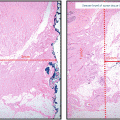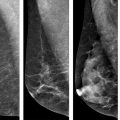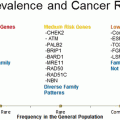Year published
Patients
Years treated
Follow-up (months)
Local recurrence rate (%)
Randomized
Non-randomized
NSABP B-17
2011
411
1985–1990
206
19.8 (15 years)
EORTC 10853
2013
507
1986–1996
128
18 (15 years)
Swedish DCIS
2008
526
1987–1999
102
12 (10 years)
UKCCR
2011
583
1990–1998
151
7.1 (12 years)
NSABP B-24
2011
1804
1991–1994
162
8.5–10 (15 years)
RTOG 9804
2012
287
1999–2006
84
0.4 (5 years)
Japan
2000
336
1962–1995
180
10 (15 years)
Multi-institutional
2005
1003
1973–1995
102
19 (15 years)
Multi-institutional
2007
798
1989–2003
59
9 (RFS at 5 years)
Canada
2013
1895
1994–2003
120
12.7 (10 years)
Multi-institutional
2012
609
N/A
62
4.2–7.2 (5 years)
Outcomes with Accelerated Partial Breast Irradiation
While there remain few studies directly comparing outcomes between WBI and APBI, there are several reports documenting the safety and efficacy of APBI in women with DCIS . The largest of such studies is a pooled analysis of the American Society of Breast Surgeons MammoSite Registry Trial (ASBrS) and data from WBH. This study included 300 patients with DCIS treated between 1993 and 2010. All patients on the registry trial (n = 192) were treated with single-lumen balloon brachytherapy and those at WBH (n = 108) were treated with interstitial brachytherapy , balloon brachytherapy, or external beam APBI . With a median follow-up of 57 months, the 5-year rate of IBTR was 2.6 % with a cause-specific survival of 99.5 %. When comparing patients with DCIS (currently listed as cautionary in the ASTRO guidelines) treated with APBI to patients with invasive cancers, who were classified as suitable per ASTRO guidelines no difference in the rates of IBTR was noted (2.6 vs. 2.4 %) [27]. The results of this study are consistent with previous publications from the ASBrS Registry Trial as well as WBH for their DCIS cohorts [28, 29] .
Recently, a multi-institutional analysis of 200 women with DCIS treated with multi-catheter interstitial brachytherapy was presented; with a median follow-up of 60 months, the 5-year actuarial risk of IBTR was 4 % with a 100 % CSS [30]. Further, on univariate analysis, no association between IBTR and patient age, grade, margin status , and receptor status was identified [30]. Similarly, a retrospective review of 126 DCIS patients from the Georgia Breast Center treated with balloon APBI found a 2-year IBTR rate of 0.81 % with no factors associated with IBTR. When evaluating the subset of patients with longer follow-up (n = 50, median follow-up 40 months), the 3-year actuarial rate of IBTR was 2.15 % [31]. A study from Washington University, with a median follow-up of 69 months, found the IBTR rate to be 2.6 % with 40 DCIS patients. A summary of studies evaluating outcomes in women with DCIS treated with APBI is presented in Table 9.2 [27–37] .
Table 9.2
Local recurrence rates for patients with ductal carcinoma in situ treated with accelerated partial breast irradiation
Year published | Patients | Years treated | Follow-up (months) | Local recurrence rate (%) | |
|---|---|---|---|---|---|
Pooled ASBrS-WBH | 2013 | 300 | 1993–2010 | 56.6 | 2.6 |
Multi-institutional | 2014 | 200 | 1997–2013 | 60 | 4 |
ASBrS registry | 2013 | 194 | 2002–2004 | 63 | 4.1 |
Georgia Breast Center | 2010 | 126 | 2003–2009 | 24 | 2.4 |
MammoSite phase II | 2006 | 100 | 2003–2006 | 9.5 | 2 |
William Beaumont Hospital | 2012 | 99 | 2002–2010 | 36 | 1.4 |
NorthShore University Health System | 2012 | 68 | 2002–2009 | 49 | 4.4 |
Bryn Mawr | 2011 | 46 | 2004–2009 | 36 | 0 |
University of Minnesota | 2013 | 41 | 2003–2009 | 63 | 9.8 |
Washington University | 2012 | 40 | 2002–2007 | 69 | 2.6 |
University of Wisconsin | 2011 | 32 | 2001–2006 | 60 | 0 |
Toxicity profiles have been well documented for each APBI technique. The multi-catheter interstitial brachytherapy technique represents the APBI technique with the longest follow-up available with respect to toxicity. The Hungarian Phase III Trial, with a 10-year follow-up, found that interstitial APBI had high rates of excellent/good cosmesis (81 %) and low rates of fat necrosis (11 %) [38]. Further, prospective data from Hungary demonstrated a 2 % rate of grade 3 fibrosis with no grade 3 telangiectasias noted and a 2 % rate of fat necrosis with interstitial brachytherapy at 12 years. Overall, excellent/good cosmesis was reported in 78 % of cases [39]. RTOG 95–17 trial was a phase I/II prospective trial of 98 patients treated with either low dose rate or high dose rate interstitial brachytherapy. With 5-year follow-up, the rate of grade 3 skin toxicity was 13 %, with 45 and 15 % of patients having telangiectasias and fat necrosis, respectively. Overall, patient satisfaction was 75 %, with 66 % of patients having excellent/good cosmesis [40]. Over the last decade, balloon- and applicator-based APBI has supplanted multi-catheter APBI as the primary APBI brachytherapy modality. The largest toxicity profile with this technique comes from the ASBrS Registry Trial. The final toxicity analysis from this prospective study demonstrated a 91 % rate of excellent/good cosmesis at 7 years with 13, 3, 10, and 13 % rates of symptomatic seroma, fat necrosis, infection, and telangiectasias, respectively [41]. With the implementation of newer balloon and applicator techniques including multi-lumen and strut devices, one would expect toxicity rates to continue to decline.
External beam APBI was initially developed using three-dimensional conformal radiotherapy (3D-CRT). However, concerns regarding toxicity and cosmesis based on data from single-institution series and RTOG 03–19 have emerged regarding this technique [42–44]. Initial outcomes from the randomized trial of accelerated partial breast irradiation (RAPID) randomized trial found that 3D-CRT APBI was associated with higher rates of adverse cosmesis with no differences in grade 3 toxicity rates compared with WBI [45]. Over the past few years, increasing use of intensity modulated radiation therapy (IMRT) to deliver external beam-based APBI has occurred with data supporting low rates of toxicity, though further study is required; it is possible that the switch from 3D-CRT to IMRT may alleviate some of these toxicity and cosmesis concerns [46, 47] .
Whole Breast Irradiation Versus Accelerated Partial Breast Irradiation
To date, limited data exist directly comparing clinical outcomes, toxicity, and quality of life between women with DCIS treated with WBI versus APBI. When evaluating radiotherapy treatment options for patients with DCIS, data have often been extrapolated from studies focusing on invasive cancers. For example, there are no large randomized trials comparing mastectomy with BCT in DCIS, yet findings from randomized trials with invasive cancers are utilized to justify the use of BCT.
When examining clinical outcomes between WBI and APBI, there are several studies available. A randomized trial comparing WBI and APBI with long-term follow-up comes from the National Institute of Oncology in Hungary. Two hundred and fifty eight women with invasive breast cancers were randomized to WBI (50 Gy) or partial breast irradiation delivered with interstitial catheters (seven fractions of 5.2 Gy, n = 88) or electron beam (50 Gy, n = 40). With a median follow-up of 10 years, no difference in the rate of local recurrence was noted (5.9 % PBI vs. 5.1 % WBI, p = 0.77) between techniques and no differences in disease-free survival, cause-specific survival, or overall survival were noted [38]. These findings are validated by a matched pair analysis from WBH; the study evaluated 199 women treated with WBI with 199 women treated with multi-catheter APBI . Patients were matched based on tumor size, age, nodal status, ER status, and hormonal therapy utilization. With 12 years follow-up, no difference in the rates of local recurrence (3.8 vs. 5.01 %, p = 0.40), disease-free survival, or cause-specific survival was noted between WBI and APBI with a reduced rate of distant metastases noted in the APBI group (10.1 vs. 4.5 %, p = 0.05) [48]. A similar study from Washington University, which did include DCIS patients (n = 18 WBI, n = 40 APBI), compared 94 patients treated with WBI with 202 treated with APBI. With a 5-year follow-up, no difference in local control was noted [32]. These findings are consistent with a meta-analysis evaluating local recurrence and survival in patients treated with APBI compared with WBI. Ye et al. evaluated four studies with a total of 919 patients included; at 5 years, no difference in local control was noted between APBI and WBI, with no differences in disease-free survival, cause-specific survival, or overall survival noted [49]. Also, comparable rates of local control can be noted by looking at Tables 9.1 and 9.2. In the NSABP B-17 trial, the 5-year IBTR rate was 2.9 % with a 6 % rate in the UKCCR trial with patients receiving WBI [50, 51]. Similarly, the 5-year rate of ipsilateral events was between 6 and 9.5 % in the NSABP B-24 trial [52]. These are comparable to the 5-year outcomes presented in Table 9.2 with APBI .
Stay updated, free articles. Join our Telegram channel

Full access? Get Clinical Tree







